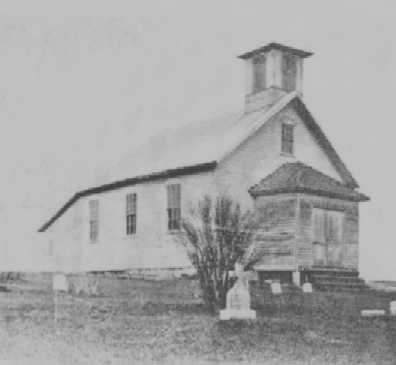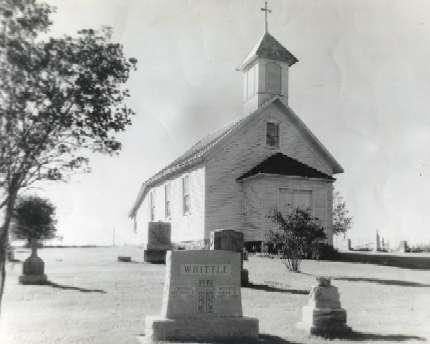In the year 1880 a group
of Bohemian immigrants inhabited the vicinity of Beulah,
Iowa. They organized the St. Wenceslaus Literary and
choral Society primarily to foster the tradition of their
native land.
In March of 1883, at the suggestion of Father Sulak, a
Bohemian missionary, the society invited the Bohemian
families, about thirty in number, to discuss plans for
the building of a chapel. Prior to this time Mass had
been offered in the home of Jacob Lestina.
Work on the chapel began in May of 1883. Jacol Hlavac, a
carpenter, drew the plans and directed the construction
of the building. Sufficient funds were raised and when
the chapel was completed, Father Sulak asked the people
to meet there every Sunday for devotions.
In 1901, the people of the parish united with the Monona
Parish. the older members who had made many sacrifices to
build this church, hoped to preserve it for posterity.
But as the older members passed away, the church slumped
into a shabby, weather-beaten structure. On October 4,
1936 a meeting was held to discuss what to do with the
church. A vote was taken and the proposal to restore the
church carried by a fifteen to eight vote. After the
meeting, volunteers offered to help with the labor and
funds. As a result, over $100.00 was raised which with
the volunteer labor, was sufficient to paint and refinish
the church and to survey and plat the cemetery.
A trade was made with Gilbert Wiethorn whereby a
triangular piece of ground on the west was traded for a
like amount on the north.
Ten years later, it was decided that the church should be
removed. In September 1946, sealed bids were called for
and the church went to the highest bidder, Mrs. Anna
Havlicek, for $1035.00. Part of the altar and stove
brought $10.00, and August Helwig bought the bell for
$50.00. He donated it to the Annville Institute in
Annville, Kentucky, where his daughter was teaching.
The altar stone, censor and chalice were turned over to
the Fathers of the Society of the Divine Worship at
Epworth who in turn sent them to missionaries in South
America where they were gratefully received.
The funds were invested in Government Bonds - the
interest thereof to be used for cemetery care.
Under the leadership of Father Donlon, a border of trees
was placed around the cemetery. Funds were donated for
the erection of a Crucifixation Group on the site where
the church had stood.

The St. Wenceslaus Cemetery was duly
incorporated and the articles of incorporation together
with the deed were filed with the County Recorder.

~125th Anniversary, St. Patrick's
Catholic Church, Monona Iowa; Souvenir Mini-History;
September 27, 1981.
~History & photos contributed by Carol Chase
|
![]()
